Related Research Articles
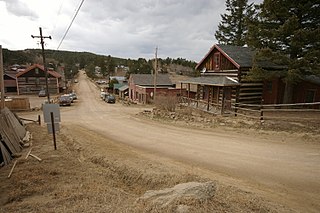
Gold Hill is an unincorporated community and a census-designated place (CDP) located in and governed by Boulder County, Colorado, United States. The CDP is a part of the Boulder, CO Metropolitan Statistical Area. The population of the Gold Hill CDP was 230 at the United States Census 2010. The Boulder post office serves the area.
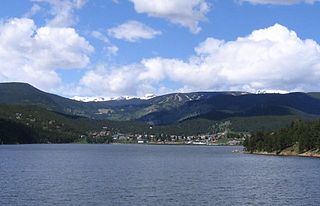
Nederland is a statutory town located near Barker Meadow Reservoir in the foothills of southwest Boulder County, Colorado, United States. As of the 2010 United States Census it had a population of 1,445.

Estes Park is a statutory town in Larimer County, Colorado, United States. The town population was 5,904 at the 2020 United States Census. Estes Park is a part of the Fort Collins, CO Metropolitan Statistical Area and the Front Range Urban Corridor. A popular summer resort and the location of the headquarters for Rocky Mountain National Park, Estes Park lies along the Big Thompson River. Landmarks include The Stanley Hotel and The Baldpate Inn. The town overlooks Lake Estes and Olympus Dam.

A hackney or hackney carriage is a carriage or car for hire. A hackney of a more expensive or high class was called a remise. A symbol of London and Britain, the black taxi is a common sight on the streets of the UK. The hackney carriages carry a roof sign TAXI that can be illuminated at night to indicate their availability for passengers.

Checker Motors Corporation was a Kalamazoo, Michigan, vehicle manufacturer and tier-one subcontractor that manufactured taxicabs used by Checker Taxi. Morris Markin established the company in 1922, initially named the Checker Cab Manufacturing Company, in Chicago through a merger of Commonwealth Motors and Markin Automobile Body. The manufacturer moved to Kalamazoo in 1923 and was renamed to Checker Motors in 1958.

John Daniel Hertz, Sr. was an American businessman, thoroughbred racehorse owner and breeder, and philanthropist.

In New York City, taxicabs come in two varieties: yellow and green; they are widely recognizable symbols of the city. Taxis painted yellow are able to pick up passengers anywhere in the five boroughs. Those painted apple green, which began to appear in August 2013, are allowed to pick up passengers in Upper Manhattan, the Bronx, Brooklyn, Queens, and Staten Island. Both types have the same fare structure. Taxicabs are operated by private companies and licensed by the New York City Taxi and Limousine Commission (TLC). It also oversees over 40,000 other for-hire vehicles, including "black cars", commuter vans, and ambulettes.

Helen Holmes was an American silent film actress, producer, director, screenwriter and stuntwoman. She is most notable for starring in the 1914–1917 serial The Hazards of Helen.
Taxicabs in a single country often share a set of common properties, but there is a wide variation from country to country in the vehicles used, the circumstances under which they may be hired and the regulatory regime to which these are subject.

Chicago Dispatcher is a monthly newspaper in Chicago, Illinois, that focuses on news and features that affect taxi drivers and the taxi industry as a whole. Chicago Dispatcher was founded in February 2002 and is published by Chicago entrepreneur George Lutfallah. Occasionally the Chicago Dispatcher will publish satirical stories such as "Cabdriver Accidentally Picks Up Black Man" or "Five Secretly Gay Aldermen" with the latter gaining international attention.
The taxicabs of the United States make up a mature system; most U.S. cities have a licensing scheme which restricts the number of taxicabs allowed. As of 2012 the total number of taxi cab drivers in the United States is 233,900; the average annual salary of a taxi cab driver is $22,820 and the expected percent job increase over the next 10 years is 16%.
Hannah Connell Barker (1844–1918) was an early resident of Boulder, Colorado. Barker was a teacher, civic leader, businesswoman and land developer in an era when industrious women were not commonly recognized for their contributions. Among other things, Barker served as a teacher; as director of the Boulder Bank; and was instrumental in platting and developing significant parts of the City of Boulder. She also owned the land that was used for the construction of Barker Meadow Reservoir, Boulder's primary source of water.

A taxi, also known as a taxicab or simply a cab, is a type of vehicle for hire with a driver, used by a single passenger or small group of passengers, often for a non-shared ride. A taxicab conveys passengers between locations of their choice. This differs from public transport where the pick-up and drop-off locations are decided by the service provider, not by the customers, although demand responsive transport and share taxis provide a hybrid bus/taxi mode.
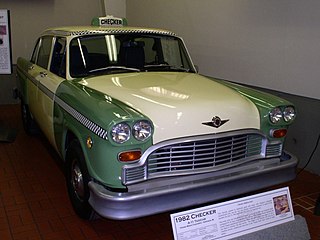
Checker Taxi was a dominant taxicab company and national franchisor that was based in Chicago, Illinois. Checker Motors was an American vehicle manufacturer based in Kalamazoo, Michigan that built the iconic Checker Taxicab, sold commercially as the Checker Marathon until 1982. Both companies were owned by Morris Markin by the 1930s.
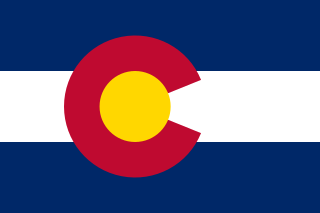
This is a bibliography of the U.S. State of Colorado.
The following is a timeline of the history of the city of Boulder, Colorado, USA.

A ridesharing company is a company that, via websites and mobile apps, matches passengers with drivers of vehicles for hire that, unlike taxicabs, cannot legally be hailed from the street.
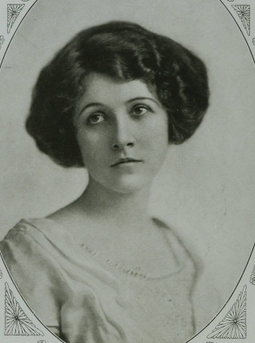
Mabel Rowland was an American monologist, actress, writer, director, editor, and the founder of the Metropolitan Players in New York City.

Sicele O'Brien was one of Ireland's pioneering pilots. She was one of three women who raced and set records in Europe and Africa in the 1920s. She was the second woman in Britain or Ireland to get a commercial pilots licence. She was the first woman in Britain or Ireland to run an air taxi service.
References
- ↑ United States of America, Bureau of the Census. Twelfth Census of the United States, 1900. Washington, D.C.: National Archives and Records Administration, 1900. T623, 1854 rolls.; Year: 1900; Census Place: Syracuse Ward 8, Onondaga, New York; Page: 3; Enumeration District: 0111; FHL microfilm: 1241136
- 1 2 3 4 5 Sloan, Mildred (February 6, 1927). "Ex-Syracuse Women Open Dude Ranch". The Syracuse Herald.
- ↑ New York State Marriage Index, New York State Department of Health, Albany, NY.; New York State Department of Health; Albany, NY, USA; New York State Marriage Index
- ↑ New York State Archives; Albany, New York; State Population Census Schedules, 1915; Election District: 03; Assembly District: 01; City: Salina; County: Onondaga; Page: 15).
- ↑ "Breeding of Mules on Molloy Farm Nearby". The Syracuse Herald. April 22, 1910.
- ↑ "Settlers_Molloy". mcgrathsearch.com. Retrieved 2019-11-27.
- ↑ Fourteenth Census of the United States, 1920. (NARA microfilm publication T625, 2076 rolls). Records of the Bureau of the Census, Record Group 29. National Archives, Washington, D.C. For details on the contents of the film numbers, visit the following NARA web page: NARA. Note: Enumeration Districts 819-839 are on roll 323 (Chicago City).
- ↑ United States of America, Bureau of the Census. Sixteenth Census of the United States, 1940. Washington, D.C.: National Archives and Records Administration, 1940. T627, 4,643 rolls.
- ↑ Year: 1910; Census Place: Tacoma Ward 1, Pierce, Washington; Roll: T624_1663; Page: 7A; Enumeration District: 0217; FHL microfilm: 1375676
- ↑ "Donald L Macley". Ancestry.
- ↑ Finch, Will (1914). Town Development: A Magazine for the Man who Believes in Himself and in His Town.
- ↑ Secretaries (U.S.), National Association of Commercial Organization (1915). Proceedings of the Annual Meeting of the National Association of Commercial.
- ↑ Year: 1920; Census Place: Boulder Ward 2, Boulder, Colorado; Roll: T625_156; Page: 10A; Enumeration District: 50
- ↑ Year: 1930; Census Place: Boulder, Boulder, Colorado; Page: 1A; Enumeration District: 0047; FHL microfilm: 2339966
- 1 2 "History of Some Badass Boulder Women". About Boulder County Colorado - Visitor and Local Guide to Boulder County Colorado. 2015-11-11. Retrieved 2019-11-24.
- 1 2 3 4 5 6 7 "Boulder history: Boulder's first women taxi drivers were a hit". Boulder Daily Camera. 2009-08-25. Retrieved 2019-11-24.
- ↑ Year: 1940; Census Place: South Boulder, Boulder, Colorado; Roll: m-t0627-00457; Page: 6B; Enumeration District: 7-34
- 1 2 "Mrs. Molloy and Mrs. MacLeay Succeed to Business of Man Called in Draft and are Successful". The Syracuse Herald. December 8, 1918.
- 1 2 3 4 5 6 7 8 "Boulder Women Conduct Taxicab Business". National Taxicab and Motorbus Journal. 2: 39–40. December 1922.
- 1 2 "Mrs. MacLeay and Mrs. Molloy biographical articles". Carnegie Library for Local History. Retrieved 2019-11-18.
- 1 2 3 4 Pettem, Silvia (2010). Only in Boulder: The county's colorful characters. Charleston, S.C.: History Press. ISBN 9781596299757.
- 1 2 "Yellow Cab Company buys Molloy-MacLeay Business in Boulder". Daily Camera. June 19, 1926.
- 1 2 Union, Elevations Credit (2019-03-08). "Women's History Month: 9 Boulder Women Who Made History | Elevations CU". Elevations Credit Union. Retrieved 2019-11-24.
- 1 2 "Molloy-MacLeay Charged Solicited at Station Here". Daily Camera. June 17, 1926.
- ↑ "Molloy-MacLeay Ordered out of Union Station". Daily Camera. June 18, 1926.
- ↑ "Molloy Scenic Tours". Daily Camera. July 1, 1926.
- ↑ "Revealing Our Routes: women of Boulder County | Carnegie Library for Local History". localhistory.boulderlibrary.org. Retrieved 2019-11-24.
- ↑ "Longtime resident reflects on Boulder living, wrangling". Boulder Daily Camera. 2013-01-04. Retrieved 2019-11-24.